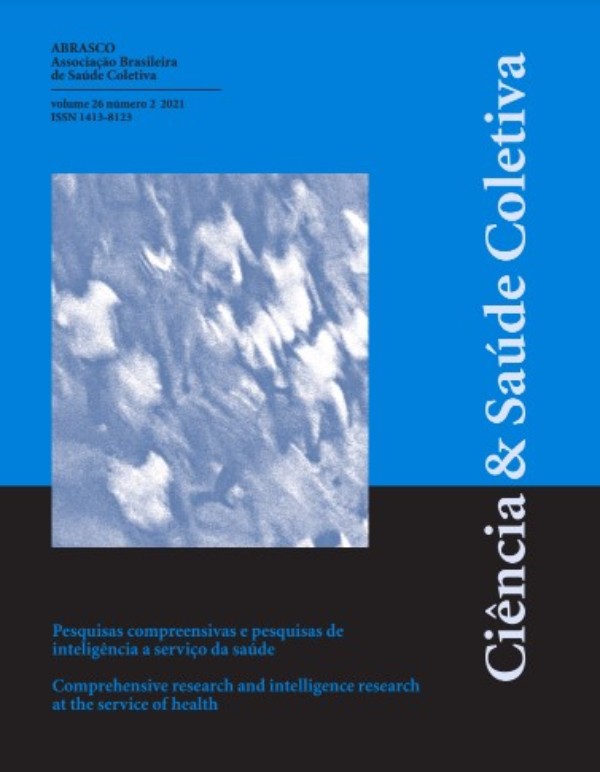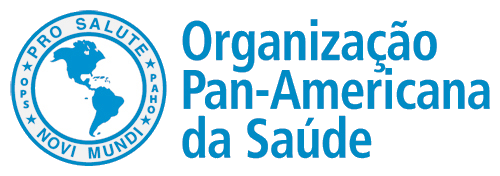Resumo (abstract):
Hidrometeorologic disasters related to population\'s health are still poorly studied in Rio Grande do Sul, Brazil. Hepatitis A is a disease that involves sanitary and urban issues and should be prevented. This study aims to analyze the relation between flood areas and the occurrence of waterborne diseases, such as hepatitis A. In order to do that a database of hepatitis A confirmed cases and flood events was structured for the Encantado city in Rio Grande do Sul for the year between 2012 and 2014. These data were analyzed spatiallythe Kernel estimator of the occurrence points of cases of Hepatitis A and correlated to the urban area. It was verified that in the three months after the occurrence of flood, 44 cases were registered, an increase of almost 300%, in the registry of cases of hepatitis A. The results identified that all the confirmed cases are in the urban area located in the floodplain. This reaffirms the importance of encouraging the formulation and implementation of policies to prevent outbreaks of post-disaster hydrometeorological diseases.
Palavras-chave (keywords):
Floods, Hepatitis A, Kernel.
Ler versão inglês (english version)
Conteúdo (article):
RELATIONSHIP BETWEEN CASES OF HEPATITIS A AND FLOOD AREAS, MUNICIPALITY OF ENCANTADO (RS), BRAZIL
Péterson Oliveira Silveira¹, e-mail: petriz.oliveira@hotmail.com, orcid: 0000-0001-7193-7974;
Laurindo Antonio Guasselli¹,2, e-mail: laurindo.guasselli@ufrgs.br, orcid: 0000-0001-8300-846X; Guilherme Garcia de Oliveira2, e-mail: g.g.oliveira10@gmail.com, orcid: 0000-0003-4197-5704;
Victor Fernandez Nascimento², e-mail: victorfnascimento@gmail.com, orcid: 0000-0002-3311-8190.
¹ Programa de Pós-Graduação em Geografia (POSGEA) - UFRGS
² Programa de Pós-Graduação em Sensoriamento Remoto (PPGSR) - UFRGS
ABSTRACT
The relationship between hydrometeorological disasters and the health of affected populations is still hardly discussed in Rio Grande do Sul, Brazil. Hepatitis A is a disease that involves health and urban environment issue and is an avoidable disease. This study aims to analyze the relationship between flood areas and waterborne diseases, in this case, hepatitis A. A database of confirmed cases of hepatitis A and flood events in the municipality of Encantado (RS), Brazil between 2012 and 2014 was structured. These data were analyzed spatially from the kernel estimator of the occurrence points of Hepatitis A cases and correlated to the urban perimeter. It was verified that 44 cases were registered in the three months following the occurrence of flood, an increase of almost 300% in the records of hepatitis A. The results identified that all the confirmed cases are in the urban area located in the floodplain. This reaffirms the importance of encouraging the formulation and implementation of policies to prevent outbreaks of waterborne diseases post hydrometeorological disaster.
Keywords: Floods, Hepatitis A, Kernel.
1. INTRODUCTION
The historical analysis of the national panorama of the climatic, geographic, and geological conditions of floods shows that these events have been among the most recurrent natural disasters from 1991 to 20101. Flash floods and floods are the types of disasters associated with hydrometeorological events, which cause more human losses.
Floods are one of the leading environmental problems in Rio Grande do Sul2,3. In the last decades, this subject has received a significant increase of research aiming the monitoring, forecasting, and control of natural disasters and delimitation of flooding-sensitive areas4-6. Such research has possibly increased as a result of the high social and material losses resulting from floods, even in cases where they are fueled by social actions and outbreaks of waterborne diseases.
Despite the increase, studies addressing the relationship between flooded areas and waterborne diseases7-9 are still very scarce in academia. The transmission of waterborne diseases is generally associated with health issues such as inadequate treatment of water supplied to the population, and also the occurrence of extreme events such as overflows, floods, and inundations. In some cases, these two factors act together, increasing the damage done to the vulnerable population. In these cases, an environment conducive to the manifestation of these diseases is established and is directly associated with the aqueous medium necessary for its proliferation. The primary diseases in this group are Leptospirosis, Hepatitis A, Diarrhea, Ancylostomiasis, Ascariasis, Schistosomiasis, and infectious diarrhea.
Hepatitis A is a waterborne disease; its main infection route is fecal-oral, through inter-human contact or contaminated water and food. Morais et al.10 related hepatitis A outbreaks, occurred in 2010 and 2012, with water quality data and confirmed the changes in the quality standard of the samples. Since it is a public health problem due to floods, it is essential to study their relationship with vulnerable populations at sites affected by such adverse events, so that knowledge about the dynamics of the disease is increased, resulting in the control and reduction of the cases through mitigating actions.
The analysis of flooding-sensitive areas can contribute to the understanding of the space-time dynamics of diseases such as Hepatitis A. Câmara et al.11 affirm that understanding the spatial distribution of data from phenomena in space is a great challenge for the elucidation of central issues in several areas of knowledge such as health. Research into these dynamics becomes even more necessary when we have vulnerable groups within flooding-sensitive areas.
Concerning geoprocessing techniques, the acquisition of health data remains a significant challenge to be overcome. This is because the health-related data are mostly used for situational studies in their programs within health secretariats.
In order to contribute to studies on waterborne diseases, and considering the high frequency with which the municipality of Encantado (RS), Brazil, is affected by the floods of the Taquari River, this research investigates the hypothesis that spatial distribution of Hepatitis A cases in the municipality is concentrated within the urban perimeter reached by the waters. Thus, this study aims to analyze cases of Hepatitis A related to floods in the urban perimeter of the city of Encantado (RS), using geoprocessing techniques for spatial analysis.
2. METHODS
The study location includes the municipality of Encantado (Figure 1), which is one of the 36 municipalities underpinning the Taquari Valley in the state of Rio Grande do Sul, with an area of 142.77 km², 140 km from the state capital, Porto Alegre. Its seat is 54 m above sea level. It has 70% masonry properties, with approximately 71% of the population owning a home12.
Figure1- Location of the municipality of Encantado (RS), Brazil.
Regarding municipal sanitation information, 93% of the households in the municipality of Encantado are connected to the general water supply network, and the rest is supplied with water from artesian wells or springs. The sewage collection network serves only 34% of the households, of which 53% have a septic tank system, and 12% the more rudimentary cesspits. The districts with low basic sanitation indicators (without sewage service, presence of open sewers and garbage accumulated in the sites) are Vila Amazonas, Vila Moca, Barra do Jacaré and Navegantes12.
According to Kurek13, 66 floods were recorded over 72 years (1941-2012) in Encantado. The reference level (RL) adopted as a flood parameter for the Taquari River is 27.77 m. At 38 m, waters overflow the river channel and cause flooding in the urban area of the municipality.
In order to fulfill the proposed objective, a database was structured with: (a) flood record, provided by the University of Vale do Taquari (UNIVATES), used to identify the maximum height of the flood and the dates of occurrence of these events; (b) Hepatitis A cases acquired from the Information System for Notifiable Diseases SINAN (2016) database; (c) municipal base of IBGE; and (d) a map of sensitive areas to flooding and overflow in the catchment area of the Taquari-Antas river14.
Regarding the set of methods and procedures, the study was divided into four stages: a) generation of a database of notifications of Hepatitis A cases in the municipality of Encantado, in the period 2012-2014; b) generation of a database of flood events in the municipality of Encantado, in the period 2007-2015; c) construction of a map of timely intensity of incidence of Hepatitis A cases in the municipality; and d) analysis of space-time dynamics of the cases reported with the incidence of floods in the municipality.
The first stage comprised the spatialization of the confirmed Hepatitis A cases.The geocoding of the cases was performed from the coordinates generated with the base of addresses available in the SINAN database, through the GEOCODE function. This function facilitates a search a set of addresses at one time on an address server. The Google Maps server was used from a table in “csv” format containing information such as Country, State, City, and Address.
All addresses were converted into points from the coordinates of the survey. No address information was disclosed. The cases used did not contain the name or other information about the patient, only confirmation of the case. The original database contained a total of 368 confirmed hepatitis A cases, but only 60.05% (221 cases) of these cases were geocoded. The other cases did not have enough information in their records to carry out the process.
The high spatial resolution orbital images obtained with Google Earth Pro were georeferenced and recorded in ArcGis. Afterward, IBGE’s urbanized areas database was superimposed on the georeferenced high-resolution image, receiving some vectorial adjustments based on the best definition of urban structures, which can be identified through the visual interpretation of the image.
With the bases adjusted, the base of flooding-sensitive areas was superimposed, which resulted in the map of the urban floodable area. The map of sensitive areas was obtained from the work of Guilherme Garcia de Oliveira et al.14, considering a detailed analysis of cotagrams and hydrograms in all the historical series of fluviometric stations of the basin, to determine the increased level of rivers against different times of return (TR). The chosen TR was five years,which characterizes satisfactorily the areas reached more frequently by the river Taquari’s waters.
In the last step, the Kernel estimator of the occurrence points of Hepatitis A cases was executed. A point intensity map of the incidence of Hepatitis A cases for 2013 was elaborated using the Kernel estimator. A two-dimensional function was used on the considered events, composing a surface whose value is proportional to the intensity of samples per unit area. This function counts all points within a region of influence, weighting them by the distance of each one to the location of interest.
The Kernel Estimator and its basic parameters are (i) influence radius (τ ≥ 0) that defines the proximity of the point to be interpolated and controls the smoothing of the generated surface; (ii) estimation function with smoothing properties of the event15, resulting in the case concentration map.
The standard ArcGis software model was used for the mapping of the concentration of hepatitis A cases generated from case geocoding. The calculation of the radius of influence (bandwidth) is calculated from the input data set (the incidence points of cases) using a spatial variant of the Silverman’s Rule-of-Thumb used for spatial outliers (that is, points distant from the rest of the points). The output cell size was defined at 6.92585 meters from the best visualization of the output matrix data for the visualization scale adopted on the map.
3. RESULTS AND DISCUSSION
As described in the methods, the map of urban areas of the IBGE, updated in the project scale based on the satellite images of Google Earth for the year of study, was used as a basis for delimiting the urban perimeter of the municipality.
Table 1 shows the number of confirmed cases of Hepatitis A from 2012 to 2014. A total of 241 cases occurred, with 44 of them registered in October 2013.
Table 1 - Confirmed cases of Hepatitis A, from December 2012 to December 2014, municipality of Encantado (RS), Brazil.
The baseline level adopted was 11 cases, which corresponds to the mean number of cases registered in the municipality without taking into account the outbreak of 44 cases. Table 2 shows the time distribution of flood records between July 2007 and October 2015 in the municipality of Encantado.
Table 2 - Flood records, July 2007 to October 2015, municipality of Encantado (RS), Brazil. The basal level adopted is the 38 m height, from which the waters overflow the river’s channel.
The figure stands out due to the abnormal increase in cases, which is almost 300% above the mean number of cases recorded monthly in the municipality. Worth noting is the flood occurred in October, about a month and a half before the abnormal increase of cases in the records of Hepatitis A.
The records of Hepatitis A cases between August and November 2013 are consistent with the record of a flood that occurred on August 25 in the municipality of Encantado. This flood reached a maximum level of 44 meters, 6 meters above the natural limit of the Taquari river channel13. Pereira and Gonçalves16state that the clinical manifestations of the symptomatic icteric form of hepatitis A appear from two to seven weeks after infection, with an average incubation period of 30 days.
The cases recorded in 2013, between August and November, are the ones with the most considerable detail in their records in the SINAN database. This may indicate a possible outbreak of hepatitis A in the municipality associated with the flood, and the invasion of water in the urban area.
According to Kurek13, the analysis of the historical series of floods coupled with the time of return between 1941 and 2012 shows that most of the floods that occurred in the last 72 years, approximately 84%, had a time of return (TR) of less than five years. This shows an increase of these floods in the last 30 years, and allows us to consider that urban infrastructures within the flooding-sensitive area below 45 m are directly exposed to the contagion and even outbreaks of Hepatitis A in periods of less than 5 years, due to the cycle of flood events that affect the municipality.
Two maps were elaborated, one containing the flooded area of the municipality within the perimeter delimited as urban (figure 3), and another one with the result of the Kernel function (figure 4), made with the geocoded Hepatitis A data. The flooded area delimited in figure 2 was obtained considering a 5-year RT, that is, identifying all the sites that, on average, every five years, are reached by the waters of the Taquari River, which borders the municipality of Encantado (RS).
Figure 2 - Flood urban area, municipality of Encantado (RS).
The Kernel map of confirmed cases of Encantado Hepatitis A shows that most cases are recorded mainly in the urban area (Figure 3).
Figure 3 - Kernel Concentration of Hepatitis A cases, between August and November 2013, in the municipality of Encantado (RS).
In the period between August and November of 2013, the cases are within or near the flooding-sensitive area, evidencing an association with the outbreak. It is noteworthy that, although the northwestern region of the urban area has a lower demographic density than the central area, it covers most of the cases occurred in 2013 during the flood period. This may be associated with the tributaries of the Taquari River, such as the Jacaré stream, which in the period of flooding are dammed by the Taquari-Antas River, flooding much of the area.
It is challenging to establish disease contagion sites since the patient may have contracted the disease outside of his residence. However, the date of the first symptoms, one can attribute the relation of the high number of cases to floods in the urban area.
The transmission of waterborne diseases is in some cases related to health and water treatment issues, and the occurrence of extreme events such as floods and overflows. In some cases, these two factors act together, increasing the damage caused to the vulnerable population. In these cases, an environment conducive to the manifestation of certain diseases that have a direct relationship with the aqueous environment, necessary for its proliferation is established, or indirectly, where water acts only as a catalyst for the contagion process.
According to Santos et al.8, when monitoring the areas of hydrological risk, based on the knowledge regarding the presence of the threat and vulnerability of Leptospirosis, it is possible to monitor and recognize areas at risk of disease outbreaks after severe hydrological events. Advance forecasting can contribute to health actions and mitigate the impacts of these events on the sensitive population. The application of this methodology to hepatitis A can contribute to the delimitation of areas with more significant potential for contagion and that need greater protection by the bodies and health officials.
The analysis of the results shows that part of the urban area of Encantado is sensitive to the occurrence of floods. Outbreaks of hepatitis A cases may occur when these events escalate. Hepatitis A is a disease that involves issues of health and organizational in the urban environment, and is an avoidable disease, but with a high number of cases considering the historical series of the municipality. In the municipality of Encantado, Hepatitis A is an urban disease. All the analyzed cases are located in the urban flooding-sensitive area. The analysis of areas sensitive to flooding may contribute to the understanding of the space-time dynamics of the most various diseases besides hepatitis A.
4. REFERENCES
1. CEPED. Atlas brasileiro de desastres naturais 1991 a 2010: volume Brasil. Florianópolis: CEPED UFSC; 2012.
2. Saito SM, Sausen TM, Lacruz MSP, Madruga R, Lima Junior ER. Avaliação dos desastres naturais ocorridos no Rio Grande do Sul em 2008. An XV Simpósio Bras Sensoriamento Remoto - SBSR. 2008;29(3):413–27.
3. Wollmann CA. Enchentes no Rio Grande do Sul do século XXI. Mercator. 2014;13(1):79–91.
4. Tucci CEM, Bertoni JC. Inundações urbanas na América do Sul. Assoc Bras Recur Hídricos. 2003;150.
5. Eckhardt R. Geração de modelo cartográfico aplicado ao mapeamento das áreas sujeitas às inundações na cidade de Lajeado / RS. Programa de Pós-Graduação em Sensoriamento Remoto; 2008.
6. Guasselli LA, Garcia de Oliveira G, Pacheco Quevedo R, Brubacher JP. MODELAGEM HIDROLÓGICA E ESPACIALIZAÇÃO DE ÁREAS SUSCETÍVEIS ÀS INUNDAÇÕES NO MUNICÍPIO DE IGREJINHA, RS. Geo UERJ [Internet]. 2016 May 2;(28). Available from: http://www.e-publicacoes.uerj.br/index.php/geouerj/article/view/10984
7. Barcellos C, Lammerhirt CB, Almeida MAB de, Santos E dos. Distribuição espacial da leptospirose no Rio Grande do Sul, Brasil: recuperando a ecologia dos estudos ecológicos. Cad Saude Publica [Internet]. 2003 Oct;19(5):1283–92. Available from: http://www.scielo.br/scielo.php?script=sci_arttext&pid=S0102-311X2003000500007&lng=pt&tlng=pt
8. Santos LBL, Assis MCA, Silva AEP, Angelis CF. Sobre risco, ameaça e vulnerabilidade à Leptospirose em situações pós-alagamentos, inundações e enxurradas: reconstruindo o episódio do Vale do Itajaí (2008-2009). Congr Bras Desastr Nat. 2012;
9. Guimarães RM, Cruz OG, Parreira VG, Mazoto ML, Vieira JD, Asmus CIRF. Análise temporal da relação entre leptospirose e ocorrência de inundações por chuvas no município do Rio de Janeiro, Brasil, 2007-2012. Cien Saude Colet [Internet]. 2014 Sep;19(9):3683–92. Available from: http://www.scielo.br/scielo.php?script=sci_arttext&pid=S1413-81232014000903683&lng=pt&tlng=pt
10. Morais KS, Barbosa APC, Fonseca RA, Freitas AG, Dalla Benetta AC, Aguiar DB. Hepatite e sua relação com a água de consumo humano. Fameco. 2014;84.
11. Carvalho MS, Câmara G. Análise Espacial de Eventos. In: Análise Espacial de Dados Geográficos. Brasília: EMBRAPA; 2004. p. 5.
12. IBGE. Censo demográfico 2010 – Agregado de setores censitários [Internet]. 2010 [cited 2018 Oct 29]. Available from: ftp://ftp.ibge.gov.br/Censos/Censo_Demografico_2010/
13. Kurek RKM. Avaliação do Tempo de Retorno das Níveis das Inundações no Vale do Taquari/RS [Internet]. UNIVATES; 2012. p. 92. Available from: http://hdl.handle.net/10737/429
14. Oliveira GG. Interpretação e mapeamento geomorfológico da bacia hidrográfica do rio Taquari-Antas, com suporte de técnicas de geoprocessamento e utilização de dados orbitais e cartográficos. SIMPÓSIO BRASILEIRO DE SENSORIAMENTO REMOTO. 2015;17:6467–74.
15. Câmara G, Monteiro AVM, Druck S, Carvalho MS. Análise Espacial e Geoprocessamento Applicado a Saúde. Análise Espacial de Dados Geográficos. 1996;
16. Pereira FEL, Gonçalves CS. Hepatite A. Rev Soc Bras Med Trop [Internet]. 2003 Jun;36(3):387–400. Available from: http://www.scielo.br/scielo.php?script=sci_arttext&pid=S0037-86822003000300012&lng=pt&tlng=pt
Acessar Revista no Scielo













